The History of Barcelona
What Should You Know Before Traveling?


Many visitors come to Barcelona for sun-soaked beaches and vibrant nightlife. While these certainly exist, this Catalan capital is much more than that. Barcelona has a rich history and understanding its culture will help you enjoy your trip more. You can find the old streets of the Gothic Quarter, but also discover modernist marvels like Sagrada Família and Casa Batlló. Each era has left its mark on Barcelona's urban landscape.
In Barcelona, every corner tells a story—of ancient civilizations, medieval conquests, artistic renaissances, and modern triumphs.
This is a city that takes pride in its distinct identity. The Catalan language, cuisine, and traditions are integral to daily life here. By understanding these local customs, you'll gain a deeper appreciation for Barcelona's place in the world.
Whether you're an art enthusiast, a history lover, a foodie, or simply curious about new cultures, Barcelona offers something for everyone. There’s a reason Barcelona is one of the favorite vacation spots for many people.
Barcelona’s museums have world-class collections, its restaurants range from traditional taverns to Michelin-starred establishments, and its festivals celebrate both ancient traditions and cutting-edge creativity.
Plus, a lot of historical attractions have a free day either on Saturday or Sunday. So, plan your visits accordingly.
Ancient Barcelona - How Did It Look?

Roman Foundation - Barcino
Barcelona’s story begins with the Romans, who founded the city as Barcino around 15 BC. The remains of this ancient settlement can still be seen today. One of the best places to experience this history is the Museu d'Història de Barcelona (MUHBA). Here, you can walk through the underground ruins of Roman streets, houses, and even a fish-salting factory. You can see a glimpse into everyday life in ancient Barcino. This site is definitely worth a visit for history enthusiasts.
Pre-Roman Iberian Tribes
Before the Romans, the area was inhabited by Iberian tribes, who laid the foundations for the city's rich cultural tapestry. While less is known about these early settlers, the influence of their customs and way of life can be felt in the layers of Barcelona’s history.
Roman Temple
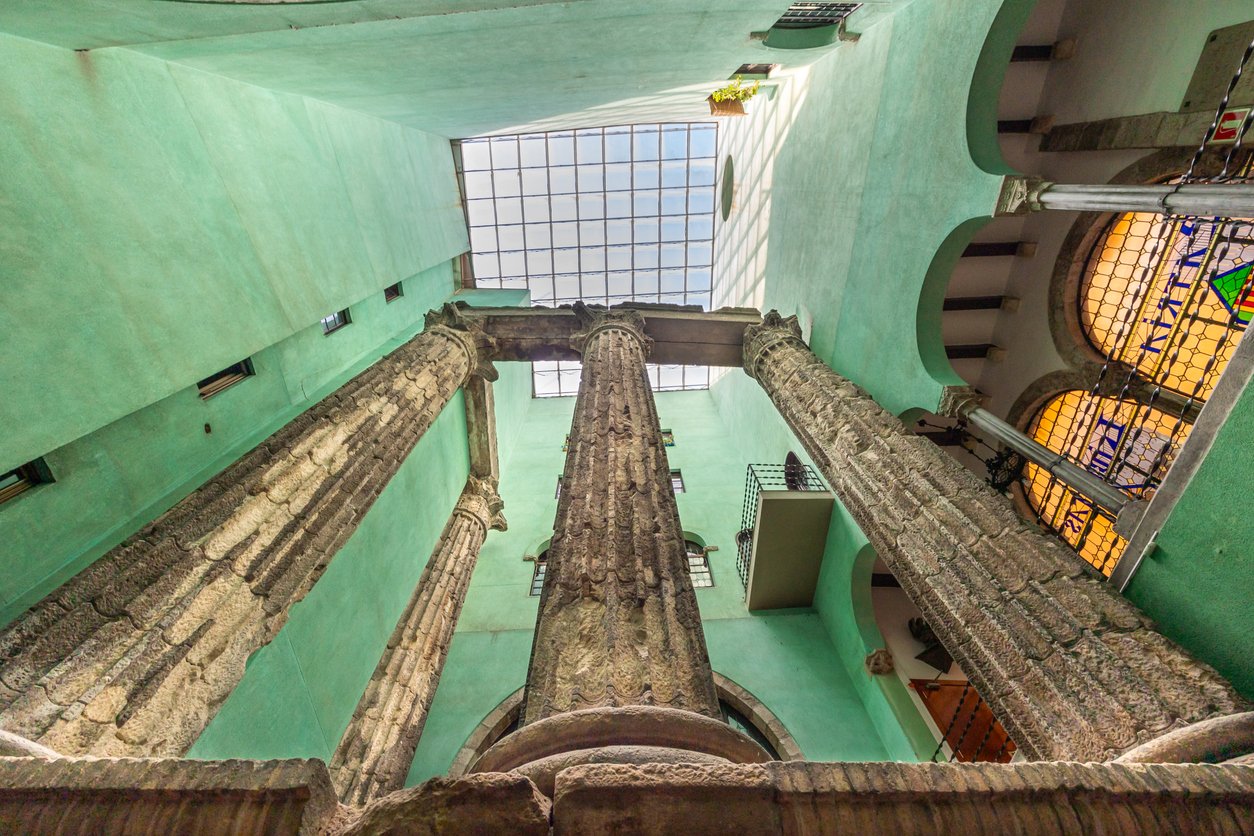
Another remarkable relic from the Roman era is the Temple of Augustus, located in the Gothic Quarter. This ancient temple, with its towering columns, is a testament to the grandeur of Roman architecture and religion. It's a must-see for visitors interested in ancient history.
Medieval Era of Barcelona

Gothic Barcelona
If you want to feel like you’ve stepped back in time, just go and wander through the streets of the Gothic Quarter (Barri Gòtic). This area, with its medieval buildings and charming plazas, showcases the city's origins during the Middle Ages. At Plaça del Rei, you can see remnants of Roman and medieval Barcelona, and the Basilica of Santa Maria del Pi, a beautiful example of Gothic architecture. The Gothic Quarter is a must-visit for anyone wanting to immerse themselves in the city's historical heart.
Catalonia's Growth
During the medieval period, Catalonia grew into a significant maritime power. The expansion of Barcelona's port facilitated trade and helped the city flourish. This period of growth is reflected in landmarks such as the Drassanes Reials (Royal Shipyards), which now houses the Maritime Museum.
Barcelona Cathedral
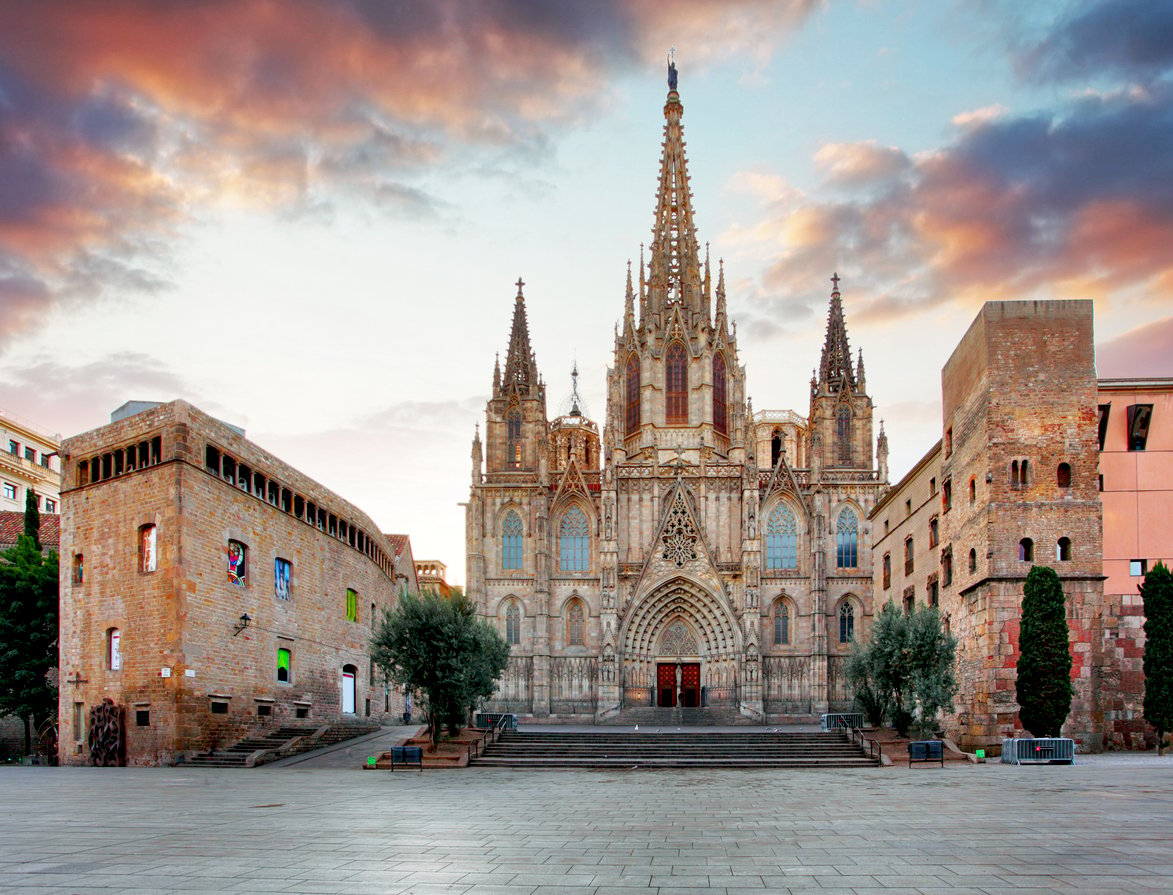
The Barcelona Cathedral, also known as the Cathedral of the Holy Cross and Saint Eulalia, is a stunning example of Gothic architecture. It’s located in the middle of the Gothic Quarter. This magnificent cathedral has detailed facades, beautiful stained glass windows, and a serene cloister. It's definitely worth a visit to appreciate its architectural beauty and historical significance.
Montjuïc

Montjuïc hill is another significant site from the medieval era, home to the Montjuïc Castle. Originally built as a military fortress, it has panoramic views of the city and the sea. The castle and its surroundings are perfect for those who enjoy combining history with breathtaking vistas.
Renaissance and Baroque Periods
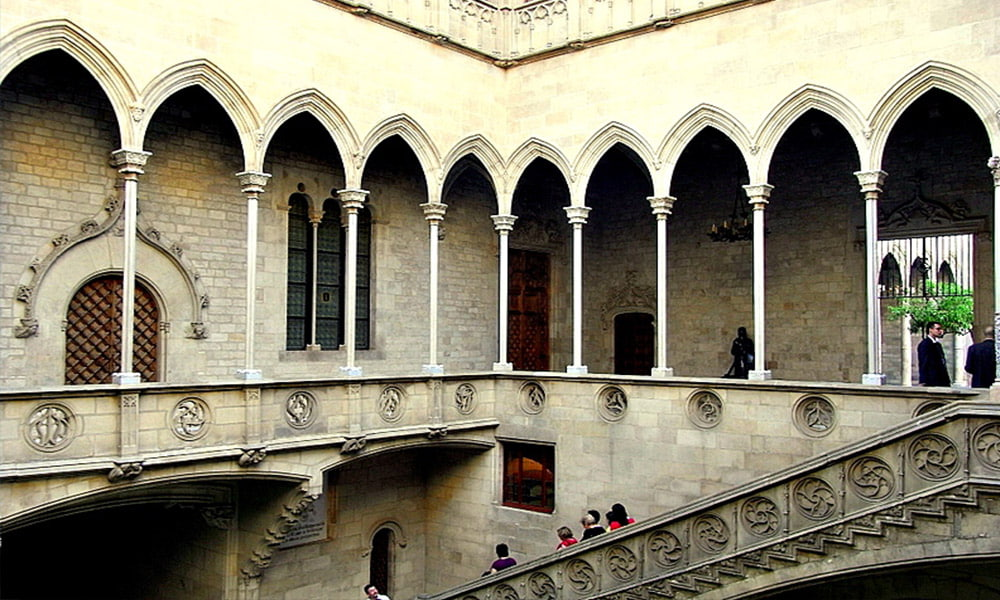
Art, Architecture, and Education in Renaissance Barcelona
The Renaissance period in Barcelona saw a blossoming of art, architecture, and education. Las Ramblas, originally a dry riverbed, transformed into a lively promenade during the Renaissance. It remains a central gathering place for locals and visitors. As you visit Las Ramblas, you'll encounter street performers, cafes, and markets that reflect the lively spirit of Renaissance Barcelona.
Architecture and City Expansion with Baroque Influence
The Baroque period brought significant architectural developments to Barcelona. One of the key landmarks from this era is the Palau de la Generalitat, the seat of the Catalan government. Its impressive Baroque façade and richly decorated interiors showcase the grandeur of the period. Visitors can often tour the palace and gain insights into both the architectural beauty and the political history of Catalonia.
19th Century to Modernist Movement
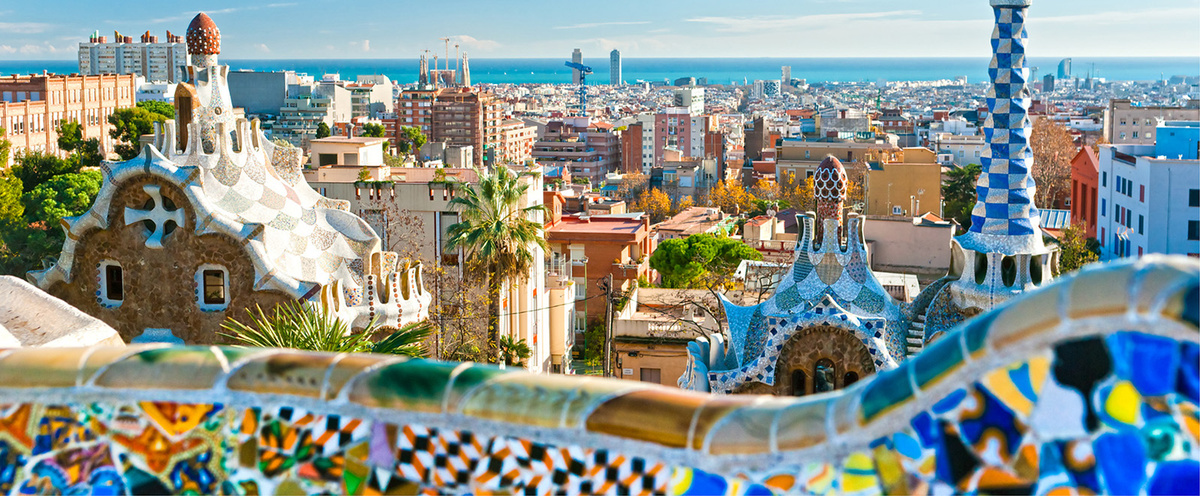
Industrial Revolution
The Industrial Revolution brought rapid growth and economic change to Barcelona, transforming it into a modern metropolis. One of the most significant developments during this period was the creation of the Eixample District, designed by Ildefons Cerdà. These streets and avenues are known for their unique chamfered corners and wide, tree-lined boulevards. Walking through Eixample, you can witness the blend of modern urban planning and historical architecture that characterizes this vibrant area.
Modernisme and Antoni Gaudí
Barcelona is synonymous with the Modernisme movement, a Catalan version of Art Nouveau that flourished in the late 19th and early 20th centuries. The city's most famous architect, Antoni Gaudí, left an indelible mark with his extraordinary works:
Sagrada Família
Gaudí's masterpiece, this awe-inspiring basilica is a must-visit. Its intricate facades and towering spires are unlike any other church in the world, reflecting Gaudí's unique vision and style.
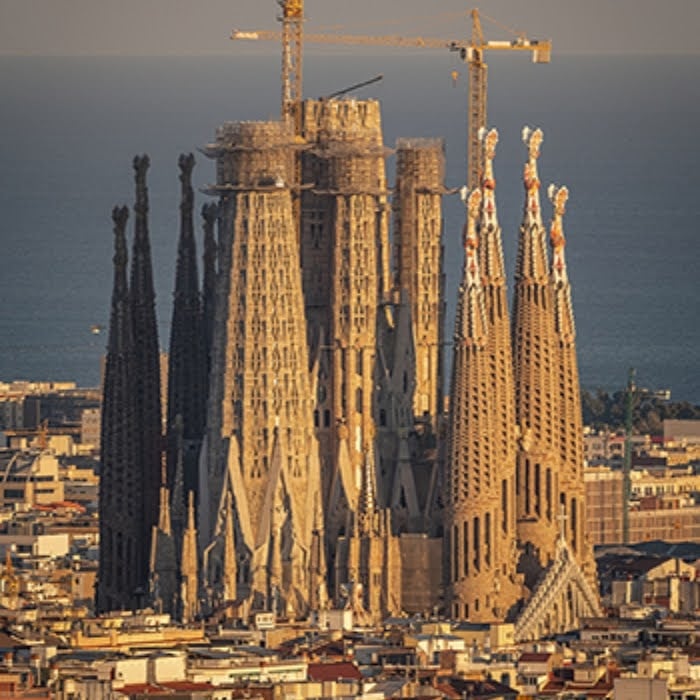
Casa Batlló
Casa Batlló is located on Passeig de Gràcia. This colorful and whimsical building is renowned for its dragon-like roof and stunning interiors. It's a fantastic example of Gaudí's imaginative use of shapes, colors, and materials.

Casa Milà (La Pedrera)
Also on Passeig de Gràcia, this building features an undulating stone facade and wrought-iron balconies. The rooftop terrace, with its surreal chimneys, offers panoramic views of the city.

Casa Vicens
Gaudí's first significant work, this vibrant and eclectic house in the Gràcia neighborhood showcases his early use of color, ceramics, and innovative design.

20th Century Challenges and Changes

Civil War and Franco Era
Barcelona faced turbulent times in the 20th century with the Spanish Civil War and Francisco Franco's dictatorship. The city endured significant hardship and repression during these years. Montjuïc Castle, a military fortress atop Montjuïc hill, played a crucial role during the Civil War and the Franco era. It was used as a prison and execution site, and today it stands as a poignant reminder of this dark chapter in Barcelona's history.
Democratic Transition - Post-Franco Spain
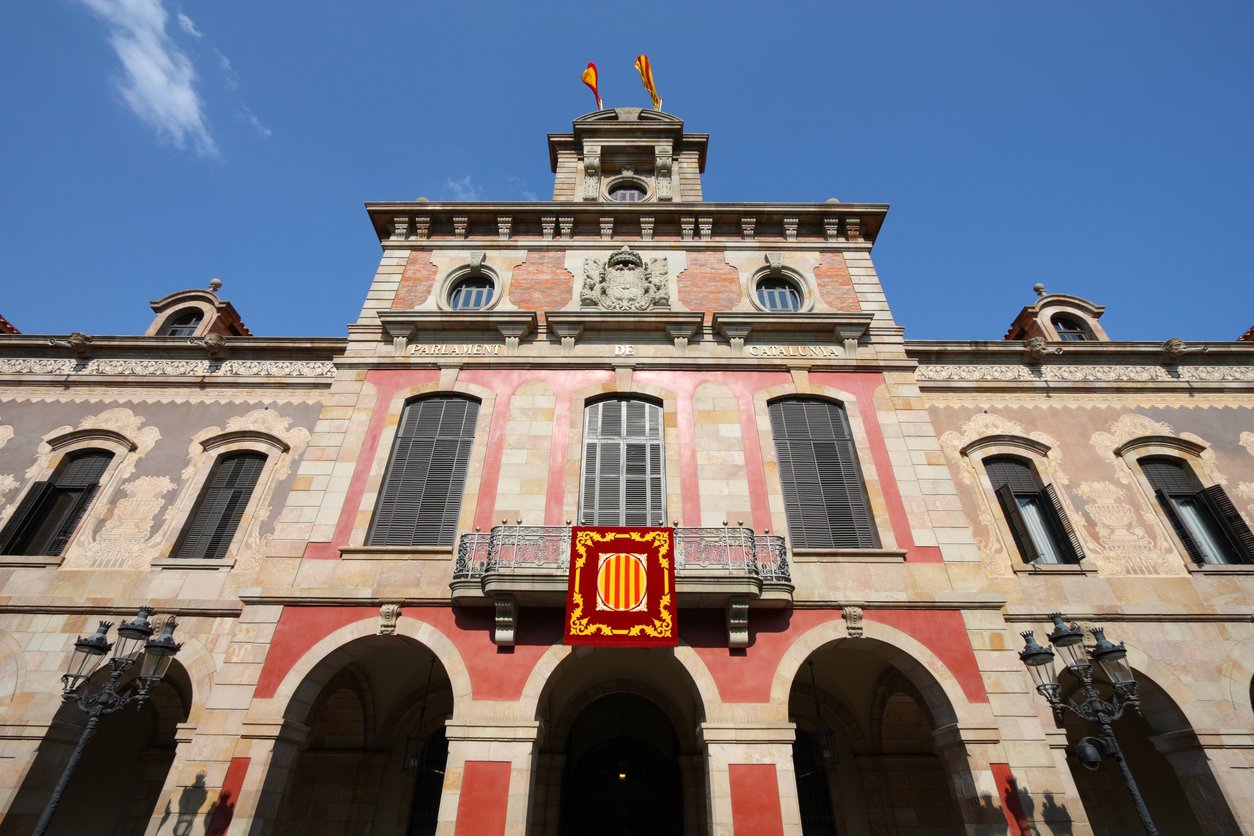
After Franco's death in 1975, Spain transitioned to democracy, and Barcelona became a symbol of cultural and political renewal. The city's role in the democratic transition is celebrated in places like Parc de la Ciutadella, a beautiful park that has become a symbol of peace and community. Originally a military fortress, it was transformed into a public park in the 19th century and further developed in the post-Franco era. Today, it houses the Catalan Parliament, several museums, and the picturesque Cascada Monumental fountain. You can walk through Parc de la Ciutadella and appreciate Barcelona's resilience and spirit of renewal.
Barcelona's Revival and the Olympics

1980s Urban Renewal and Preparations for the 1992 Olympics
The 1980s was a period of significant urban renewal in Barcelona, as the city prepared to host the 1992 Summer Olympics. This transformation was most evident in the development of the Olympic Stadium in Montjuïc. Originally built in 1927, the stadium was renovated to become the centerpiece of the Olympic Games.
1992 Olympic Games - Global Recognition of Barcelona
The 1992 Olympics were a turning point for Barcelona, propelling it onto the global stage and transforming its urban landscape. The creation of the Olympic Village and the redevelopment of the Port of Barcelona were key projects that revitalized the city's coastline and created new residential and commercial areas. The Olympic Village and the port area are a testament to the city's successful efforts to blend modernity with its historic charm.
21st Century Barcelona

Infrastructure, Economy, and Cultural Advancements
In the 21st century, Barcelona has continued to evolve, with modern developments transforming its skyline and infrastructure. One of the most striking examples is the Torre Glòries (formerly known as Torre Agbar). It is a futuristic skyscraper that has become an iconic part of the city's silhouette. It was designed by Jean Nouvel and symbolizes Barcelona's economic growth and innovative spirit. Visiting Torre Glòries, you can admire its unique design and the vibrant illumination that lights up the night.
Cultural Diversity in Barcelona
Barcelona’s rich cultural fabric has been further enriched by immigration and the resulting multiculturalism. People from South America, North Africa, and South Asia have all contributed to this. Neighborhoods like El Raval and Poble-sec showcase this diversity.
El Raval was once a marginalized area, but has transformed into a vibrant, multicultural neighborhood. It is home to the Museum of Contemporary Art of Barcelona (MACBA) and a plethora of ethnic restaurants, trendy shops, and cultural centers. Exploring El Raval, you'll experience a blend of cultures and histories.
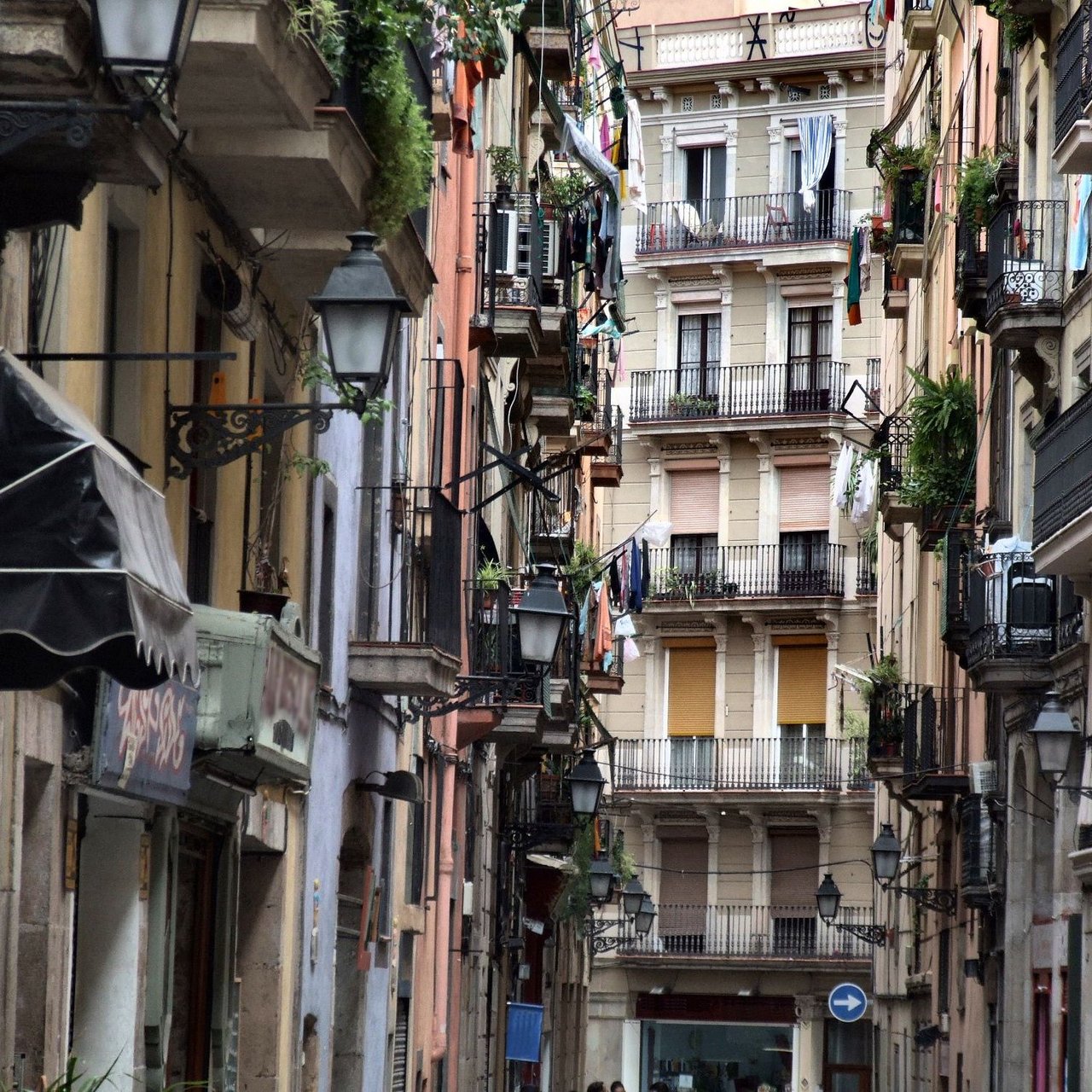
Poble-sec is between Montjuïc and the streets of central Barcelona. Poble-sec is known for its tapas bars, theaters, and music venues that reflect the area's lively and eclectic character. Visiting Poble-sec offers a taste of Barcelona’s dynamic cultural scene and its inclusive spirit.

Cities Close to Barcelona
If your time or budget doesn’t allow for long travel across Spain, there are several wonderful cities near Barcelona that offer rich experiences and can be easily reached for a day trip or a short stay.

Sitges
Sitges is just 35 kilometers southwest of Barcelona. It’s known for its beautiful beaches, vibrant nightlife, and cultural festivals. The town has narrow streets and whitewashed buildings. Sitges is also famous for its film festival and carnival, so it can be a lively destination all year round.
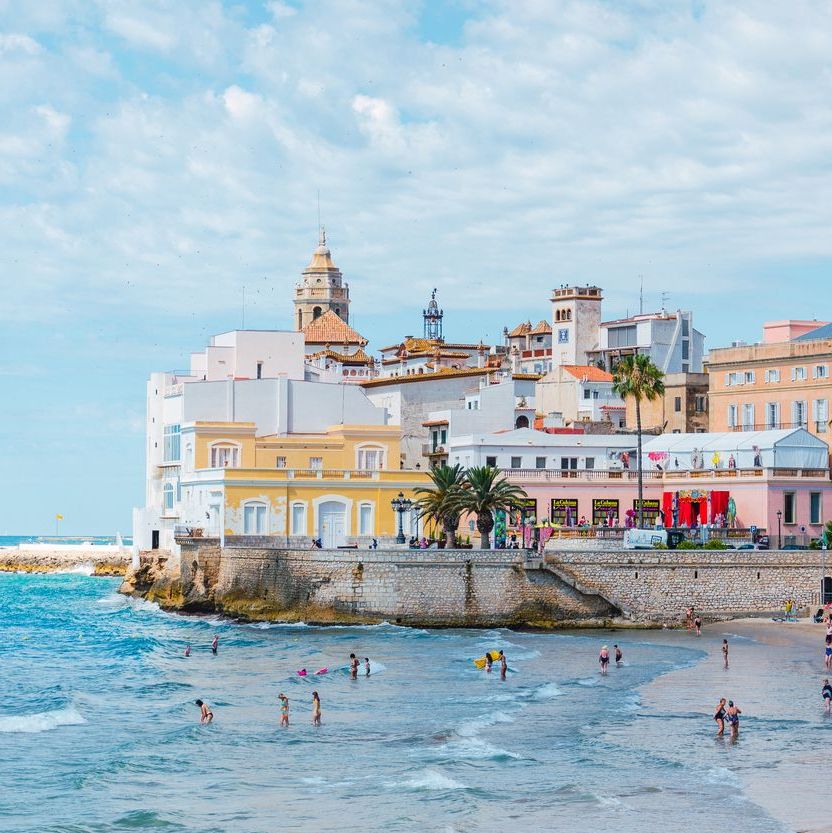
Montserrat
Montserrat is about 60 kilometers northwest of Barcelona. It’s a stunning mountain range that is home to the famous Montserrat Monastery. The monastery is located on the rocky peaks, with breathtaking views and spiritual tranquility. Visitors can explore the basilica, which houses the statue of Black Madonna, and enjoy hiking trails through the dramatic landscape.
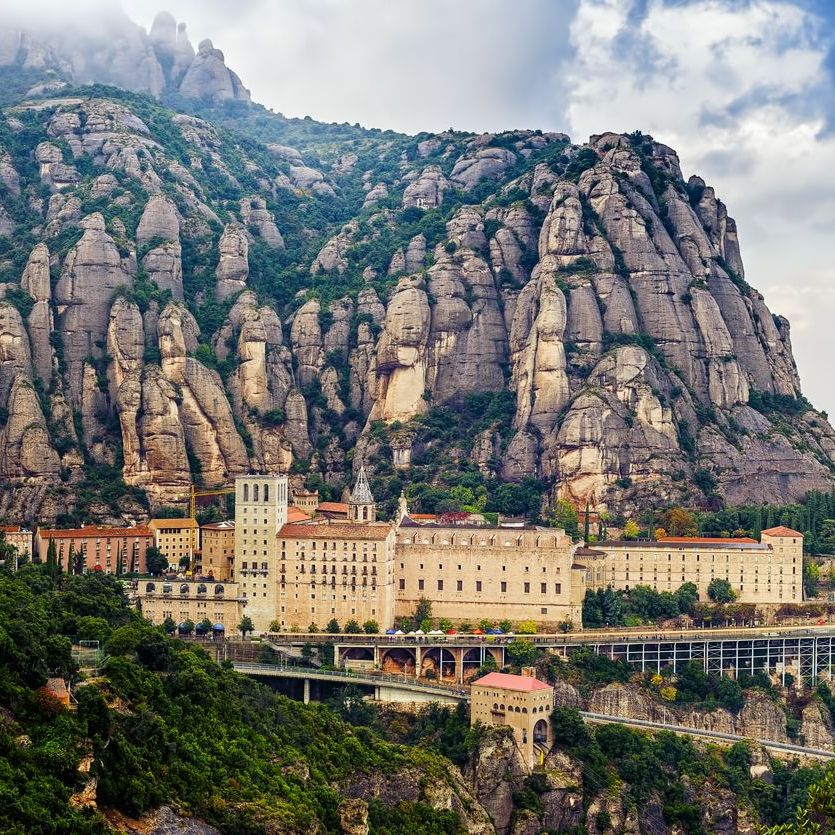
Tarragona
Tarragona is approximately 100 kilometers to the southwest. Its well-preserved ruins, including the Roman Amphitheatre and the ancient city walls, provide a fascinating glimpse into the past. The city also has beautiful beaches and a charming old town.

Girona
Girona is located about 100 kilometers northeast of Barcelona. It’s a historic city with a well-preserved medieval quarter. Visitors can walk along the ancient city walls, explore the Jewish Quarter, and admire the impressive Girona Cathedral. The colorful houses along the Onyar River create a picturesque scene that’s perfect for a leisurely stroll.

Figueres
Figueres is roughly 140 kilometers north of Barcelona. It is the birthplace of the surrealist artist Salvador Dalí. The main attraction here is the Dalí Theatre-Museum, which showcases a vast collection of the artist’s work in a building designed by Dalí himself. Art lovers will find Figueres an inspiring and unique destination.

Languages in Barcelona - 2 Main Languages
Barcelona is a multilingual city, but they take pride in their languages. They play a significant role in its cultural identity. The two main languages spoken here are Castilian (Spanish) and Catalan. Read more about Spanish and Catalan here.
Castilian vs. Catalan
Castilian (Spanish)
As the official language of Spain, Castilian is widely spoken and understood throughout Barcelona. Visitors will find that most signs, menus, and public information are available in Spanish, and it's commonly used in business and daily interactions.
Catalan
Catalan is the co-official language of the region of Catalonia, which includes Barcelona. It is deeply rooted in the city's identity and is used in government, education, and media. Catalan has its own distinct vocabulary, grammar, and pronunciation, different from Castilian.
While many residents are bilingual, speaking both languages fluently, there is a strong emphasis on preserving and promoting Catalan. Visitors will hear Catalan spoken in various contexts and see it on street signs and public notices. Learning a few basic phrases in Catalan, such as "Bon dia" (Good morning) or "Gràcies" (Thank you), can make your travel experience better and show appreciation for the local culture.
Where to Get News About Barcelona? - Learn More About Spain
Staying informed about local events and news in Barcelona is essential for travelers and residents alike. It will help you understand Spain’s history better, help you learn Spanish and make your trip more immersive. Here are some reliable sources for news about Barcelona:
La Vanguardia
One of the leading newspapers in Catalonia. It has comprehensive coverage of local, national, and international news. Available in both Spanish and Catalan.
El Periódico
Another major newspaper that provides extensive news coverage, including cultural events, politics, and local happenings. It is also available in both Spanish and Catalan.
Time Out Barcelona
A great resource for information on events, dining, nightlife, and cultural activities in Barcelona. It is available in English so it’s accessible for international visitors.
Catalan News
An English-language news service that provides up-to-date information on politics, culture, and society in Catalonia and Barcelona.
Betevé
Barcelona’s local television station offers news and cultural programming. Their website provides news articles and videos in Catalan.
Local Radio Stations
Tune into local radio stations like RAC1 and Catalunya Ràdio for live news updates and cultural programming.
Conclusion
Barcelona's rich tapestry of history, culture, and architecture makes it a must-visit destination. From the ancient Roman roots of Barcino to the modernist masterpieces of Antoni Gaudí, every corner of the city tells a unique story. Explore the vibrant streets of Las Ramblas, Gothic Cathedral, or just enjoy the Mediterranean beaches. Barcelona offers an unforgettable experience for every traveler, no matter what you like, Barcelona has it!
Tip: Don't miss a visit to the lesser-known Bunkers del Carmel. This spot offers panoramic views of the entire city and is a favorite among locals for watching the sunset.
For more detailed information and to plan your perfect trip to Barcelona, visit Barca Trips. Here, you'll find everything you need to know, from travel tips to comprehensive guides. Let’s make sure you make the most of your visit to this incredible city.
FAQs
Why do people love Barcelona so much?
People love Barcelona for its rich history, vibrant culture, stunning architecture, and lively atmosphere. The city's diverse attractions, from beautiful beaches to world-renowned museums, offer something for everyone.
What is the number one attraction in Barcelona, Spain?
The number one attraction in Barcelona is the Sagrada Família, Antoni Gaudí's unfinished masterpiece. This iconic basilica has millions of visitors each year with its unique architectural design and intricate details.
What is Barcelona famous for historically?
Barcelona is famous historically for its Roman origins, medieval Gothic Quarter, and its role as a major maritime power in the Mediterranean. The city’s rich history is evident in its well-preserved architecture and historical sites.
Why is Barcelona different from the rest of Spain?
Barcelona is different from the rest of Spain due to its unique Catalan culture, language, and identity. The city's distinct architectural styles, vibrant festivals, and political history also set it apart.
What is Barcelona's most famous street called?
Barcelona's most famous street is La Rambla, a boulevard known for its lively atmosphere, street performers, and outdoor cafes. It runs from Plaça de Catalunya to the Christopher Columbus Monument at the waterfront.
What is Barcelona famous for culturally?
Barcelona is famous culturally for its contributions to art, architecture, and cuisine. The city is home to many works by Antoni Gaudí, numerous art galleries, and a thriving food scene that includes traditional Catalan dishes.
What food is Barcelona known for?
Barcelona is known for its traditional Catalan cuisine, including dishes such as paella, tapas, and crema catalana. The city also offers a wide variety of seafood, thanks to its coastal location.
What language is spoken in Barcelona?
The main languages spoken in Barcelona are Catalan and Spanish. Catalan is the co-official language of the region, and many residents are bilingual, speaking both Catalan and Spanish fluently.
When was Barcelona founded?
Barcelona was founded by the Romans around 15 BC as a military camp called Barcino. Over time, it grew into a significant settlement, eventually becoming the vibrant city we know today.



